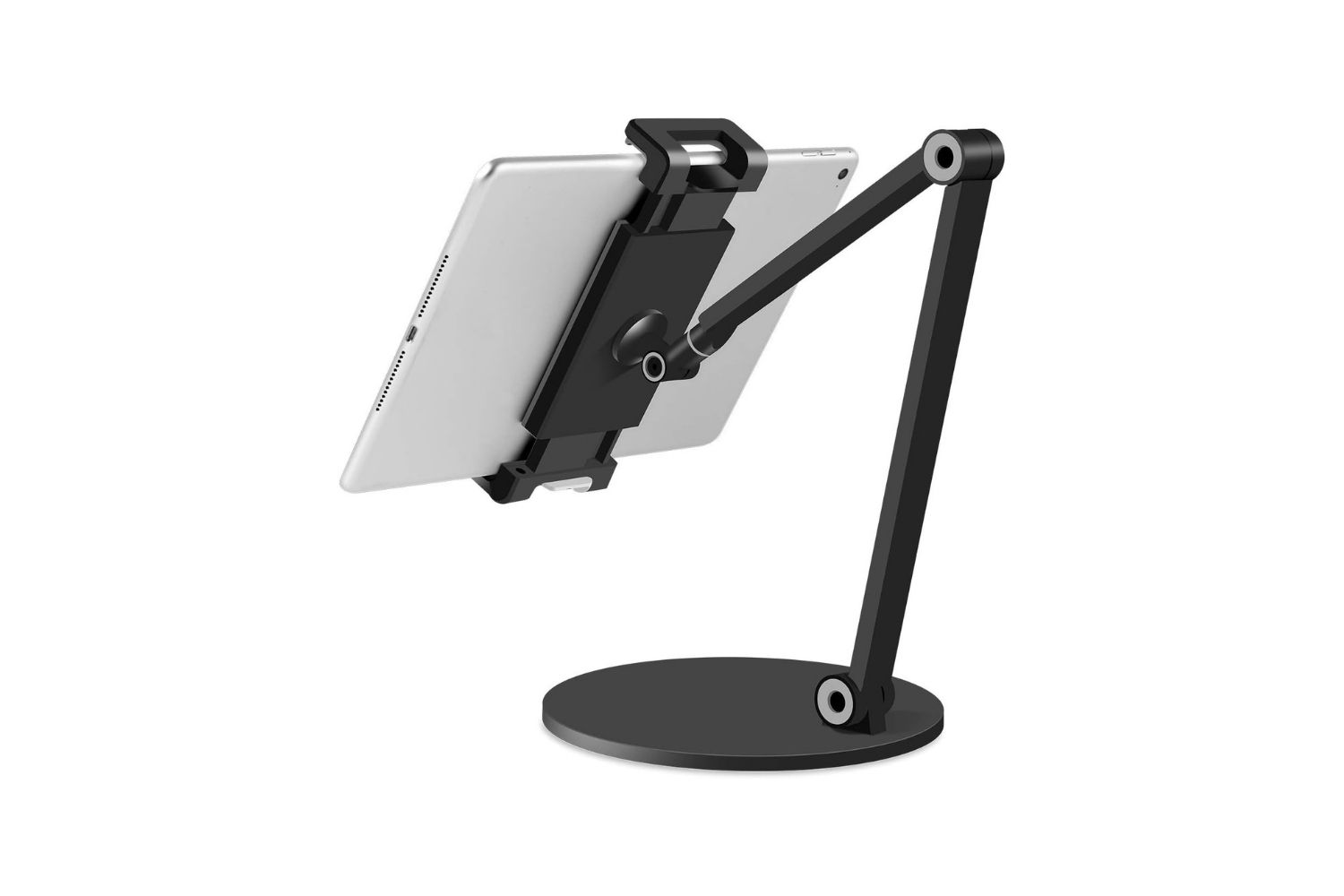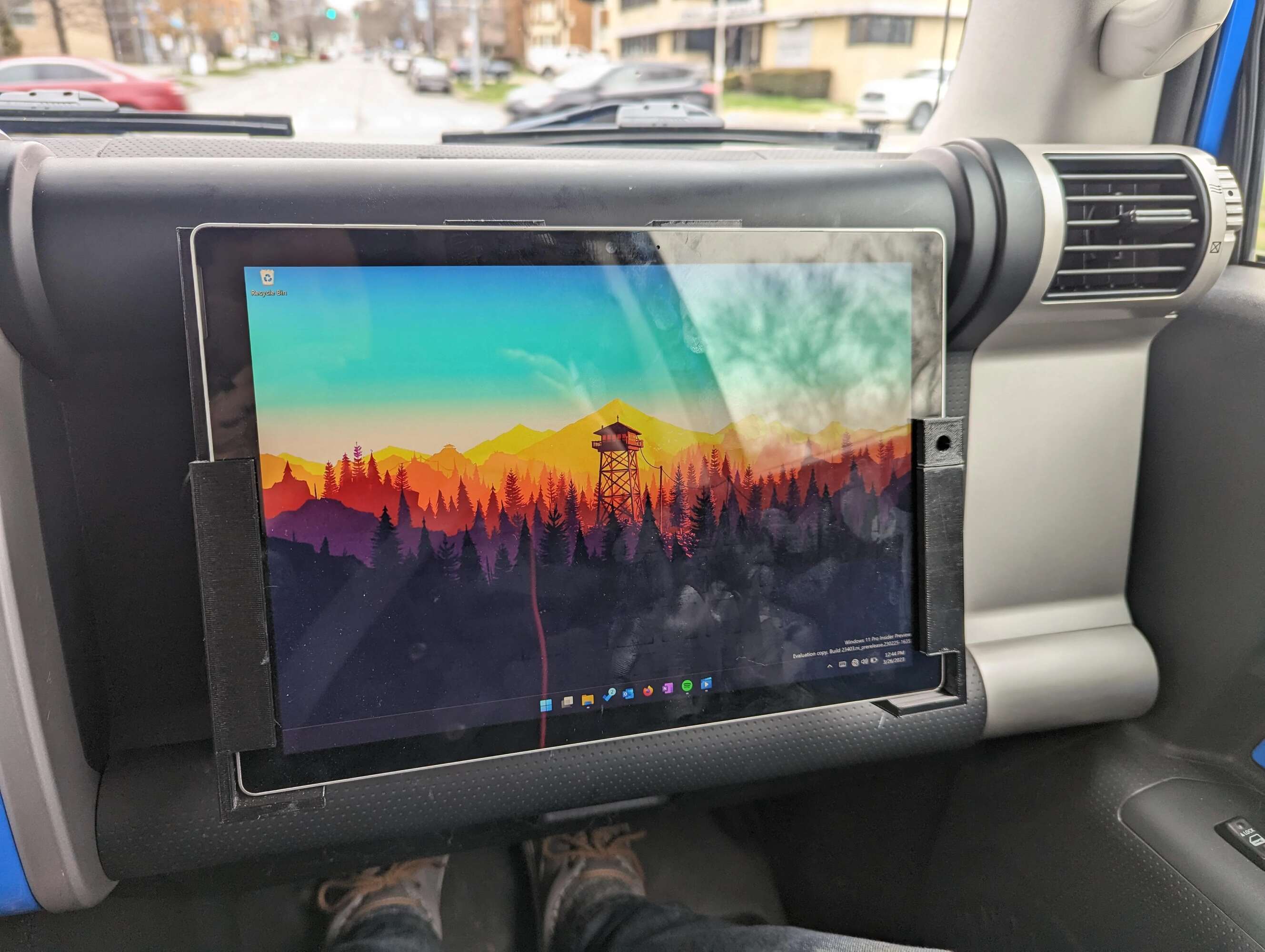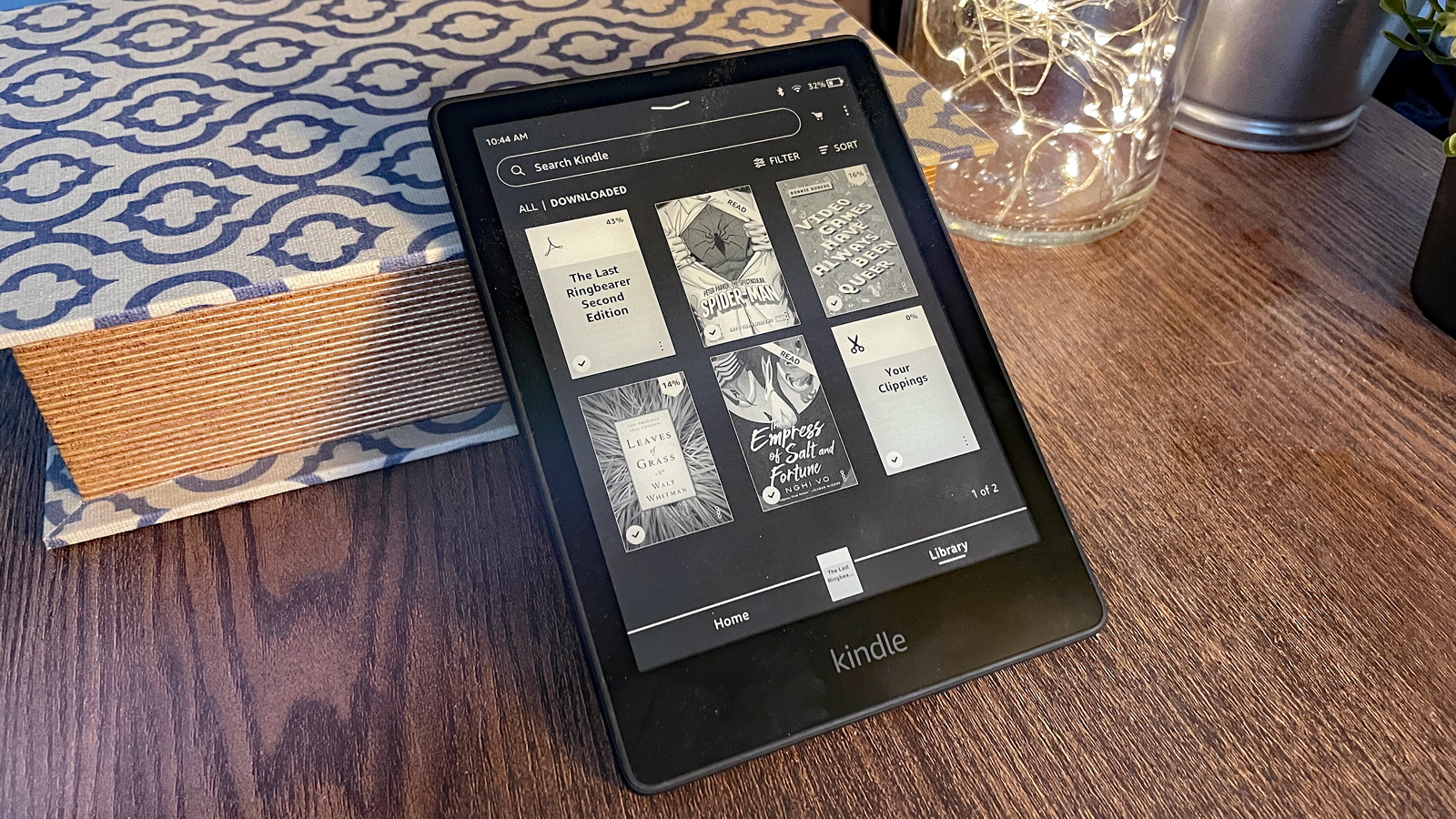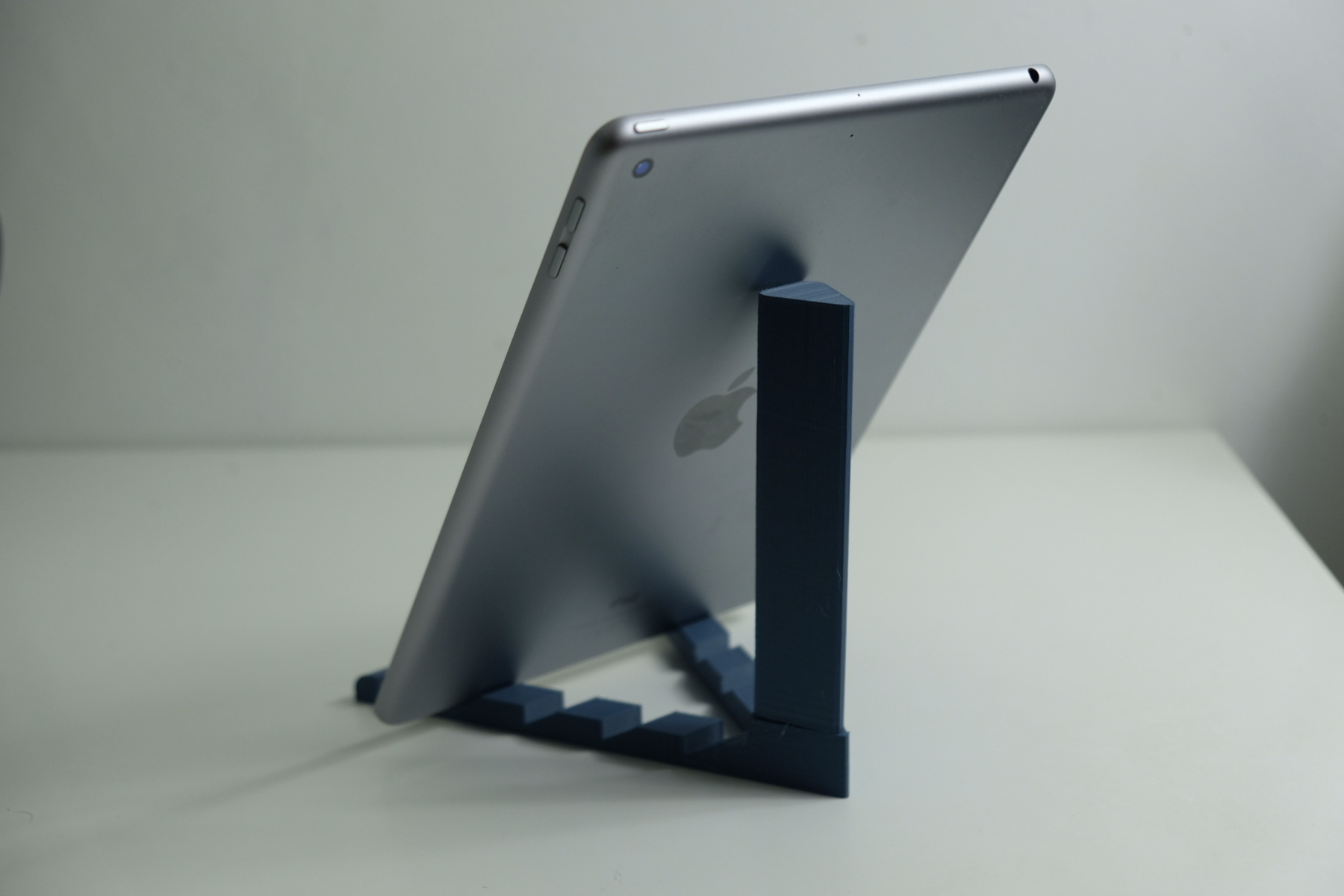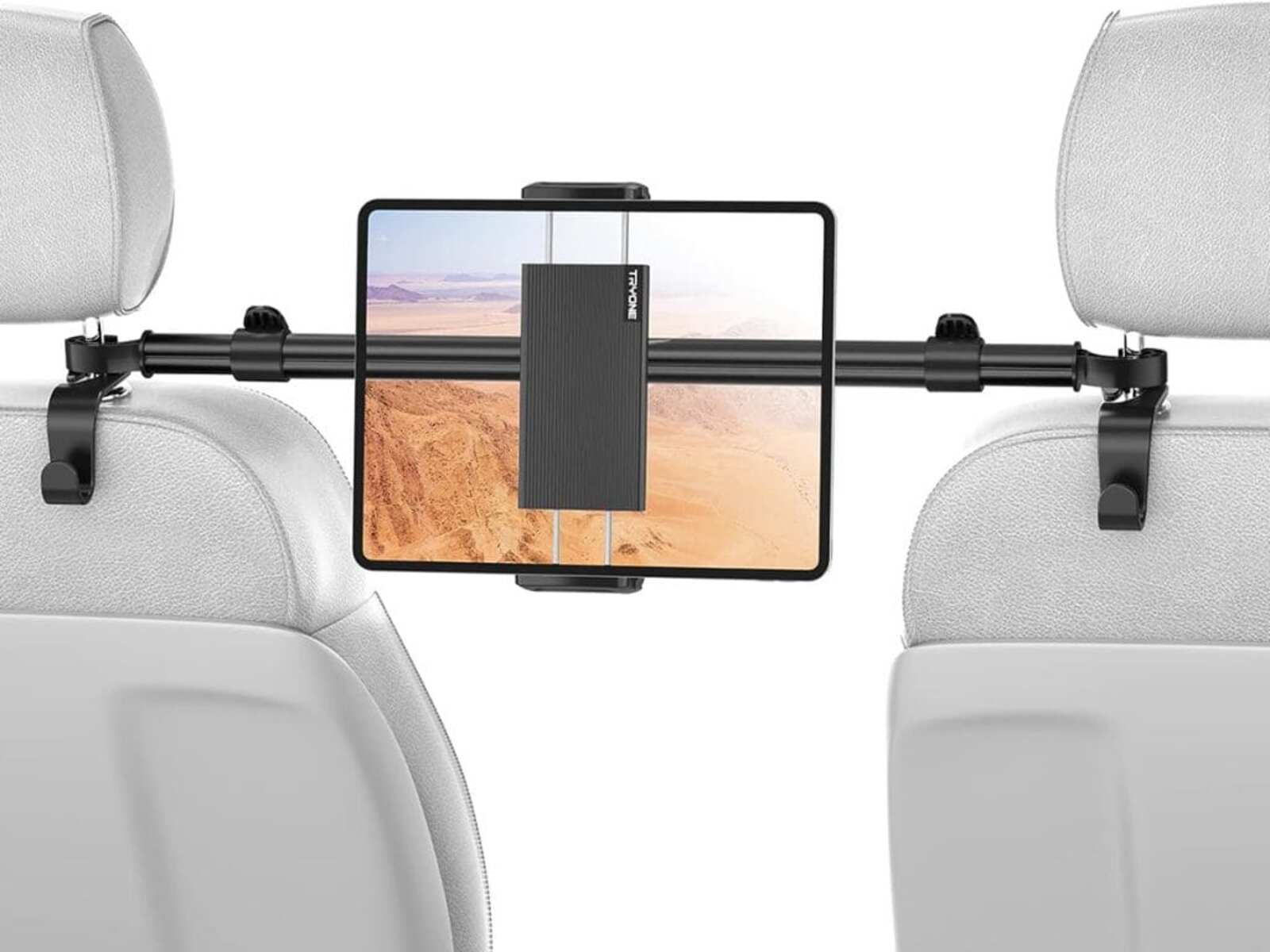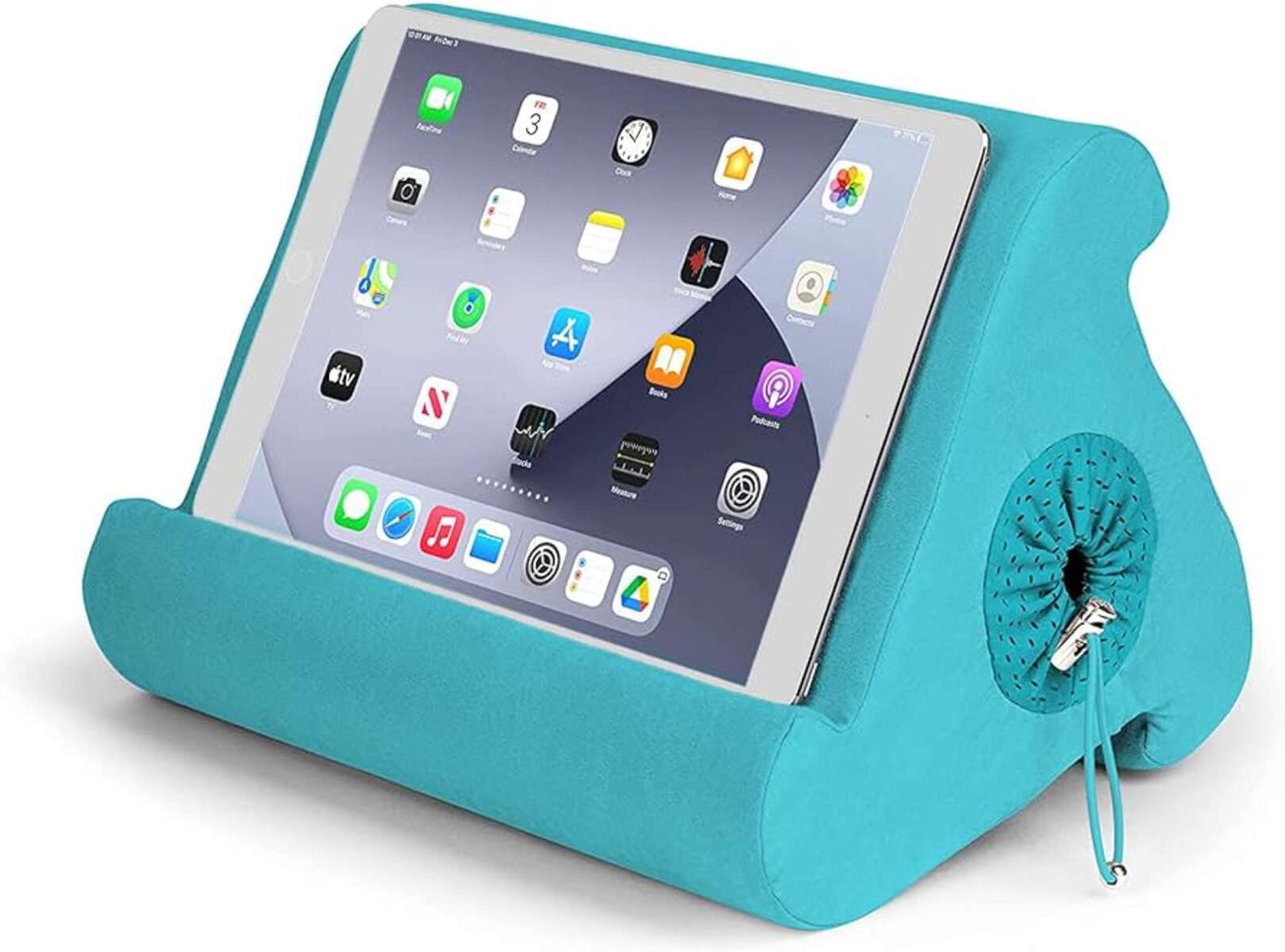Introduction
Welcome to this step-by-step guide on how to make a tablet holder! Whether you enjoy watching movies or videos on your tablet, or use it for cooking recipes in the kitchen, having a sturdy and convenient tablet holder can greatly enhance your experience. Instead of constantly holding your tablet or propping it up against random objects, having a dedicated tablet holder provides stability and convenience.
In this guide, we will walk you through the process of making a tablet holder from scratch. You don’t need any advanced woodworking skills or expensive equipment for this project. With just a few basic tools and some readily available materials, you’ll have a functional tablet holder in no time!
Not only is making your own tablet holder a cost-effective solution, but it also allows you to customize the design and size to perfectly fit your tablet. You can choose the type of wood, the finish, and even add personalized touches to make it uniquely yours. Plus, it’s a fun and rewarding DIY project that you can enjoy and showcase to others!
Before we dive into the step-by-step instructions, let’s quickly go over the materials you’ll need for this project. Don’t worry, you won’t need anything too fancy or hard to find.
Materials Needed
Before you start making your tablet holder, gather the following materials:
- Wood: Choose a sturdy and durable type of wood for your tablet holder. You’ll need two pieces of wood – one for the base and one for the back support. The dimensions of the wood will depend on the size of your tablet.
- Saw: To cut the wood pieces to the desired size, you’ll need a saw. A hand saw or a circular saw will work just fine for this project.
- Sandpaper: Smooth out the rough edges and surfaces of the wood with sandpaper. Opt for medium and fine-grit sandpaper for the best results.
- Wood glue: To secure the different parts of the tablet holder together, you’ll need wood glue. Make sure to choose a strong and reliable wood glue to ensure the stability of the holder.
- Clamps: Clamps will help hold the wood pieces in place while the glue dries. They ensure a secure bond between the different parts of the tablet holder.
- Wood finish: Enhance the appearance and protection of your tablet holder by applying a wood finish. You can choose from various finishes, such as varnish, stain, or paint, depending on your preference.
- Paintbrush or sponge: Use a paintbrush or sponge to apply the wood finish evenly on the tablet holder. Make sure to choose a brush or sponge appropriate for the type of finish you’re using.
These are the basic materials you’ll need to make your tablet holder. You may also consider additional embellishments such as decorative knobs, hooks, or paint to add a personal touch and enhance the aesthetic appeal of your creation.
Now that you have all the necessary materials ready, let’s move on to the step-by-step process of creating your own tablet holder!
Step 1: Gather Your Materials
The first step in making a tablet holder is to gather all the materials required for the project. By having everything ready before you begin, you can work efficiently and avoid interruptions.
Refer back to the list of materials needed and ensure you have all of them on hand. Double-check the dimensions of the wood pieces you need, based on the size of your tablet. It’s essential to have the right measurements to ensure the tablet holder fits your device perfectly.
Clear a workspace that provides enough room for you to work comfortably. A sturdy table or workbench should do the trick. Ensure your workspace is well-lit, well-ventilated, and clutter-free to promote safety and efficiency.
Gather your tools as well, such as the saw, sandpaper, wood glue, clamps, paintbrush or sponge, and any additional tools you might need. Keep them within reach, so you don’t need to search for them during the process.
It’s a good practice to read through the entire guide once before starting the actual construction. Familiarize yourself with each step and visualize the process. This way, you’ll have a clear understanding of the building process and be able to tackle any challenges that may arise.
Once you have all your materials and tools ready, you’re all set to begin constructing your tablet holder. The next step will involve measuring and marking the wood pieces to ensure accurate cuts, so make sure you’re prepared with a measuring tape and pencil.
Now that you’re organized and ready to go, let’s move on to the next step: measuring and marking the wood pieces!
Step 2: Measure and Mark
With all your materials gathered and your workspace ready, it’s time to measure and mark the wood pieces for your tablet holder. Accurate measurements are crucial for a well-fitting and functional holder, so take your time with this step.
Start by placing your tablet on the base piece of wood. Align it to one edge, leaving some space on the sides and top for stability. Use a pencil to mark the outline of your tablet on the wood. This will serve as a guide for the size of the slot you’ll need to cut in the next step.
Next, measure the thickness of your tablet to determine the depth of the slot. Add a small buffer to ensure a snug fit but leave enough room for easy insertion and removal of the tablet. Mark this measurement on the side of the base piece. This will be the depth of the slot you’ll cut.
Now, onto the back support piece. Measure the height of your tablet and mark this measurement on the wood, ensuring the marking is parallel to the base piece. This will be the height of the back support that holds the tablet in an upright position.
Consider the angle at which you want your tablet to be positioned – slightly tilted or fully upright. Based on your preference, you can mark a slanted line starting from the top of the back support down to the edge that will be attached to the base piece. This angle will provide stability and an optimal viewing angle for your tablet.
Take precise measurements and use a straightedge or ruler to ensure your lines are accurate. Double-check your markings before moving on to the next step, as any errors in these measurements can affect the functionality of your tablet holder.
Once you’re satisfied with the measurements and markings, you’re ready to move on to the next step: cutting the wood pieces to size.
Step 3: Cut the Wood Pieces
Now that you have carefully measured and marked the wood pieces for your tablet holder, it’s time to cut them to size. This step requires precision and attention to detail, so take your time to ensure accurate cuts.
Start with the base piece of wood. Using a saw, carefully cut along the marked outline of your tablet. Take your time and follow the line as accurately as possible to make a clean and straight cut. If you’re using a hand saw, make sure to maintain a steady hand and apply even pressure throughout the cut. If you’re using a circular saw, use a guide or a straightedge to ensure a smooth and straight cut.
Next, focus on cutting the slot for your tablet. Use the depth marking on the side of the base piece as a guide. Start by making a series of parallel cuts within the marked area, and then use a chisel or a router to remove the wood in between the cuts. Take your time and work slowly to ensure a precise slot that fits your tablet snugly.
Move on to cutting the back support piece. Using a saw, carefully follow the marked lines to cut the desired height and angle of the back support. Make sure to maintain a straight cut and smooth edges to ensure a stable and visually appealing piece.
Throughout the cutting process, prioritize safety by wearing protective goggles and gloves. If you’re using power tools, follow the manufacturer’s instructions and take precautions to prevent accidents.
Once you’ve finished cutting the wood pieces, double-check that they fit together properly. The slot in the base piece should snugly accommodate your tablet, and the back support should align correctly with the base. Make any necessary adjustments or refinements to ensure a perfect fit.
Congratulations! You’ve successfully cut the wood pieces for your tablet holder. In the next step, we’ll move on to sanding the wood to create a smooth and polished finish.
Step 4: Sand the Wood
After cutting the wood pieces for your tablet holder, it’s time to make them smooth and polished by sanding. Sanding not only gives the wood a refined appearance but also ensures that there are no rough edges or splinters that could damage your tablet.
Start by assembling the necessary sandpaper. Using medium-grit sandpaper (around 80-120 grit), begin sanding the cut edges of the wood pieces. Hold the sandpaper firmly and move it in a back-and-forth motion along the edges, applying even pressure. This will remove any roughness and create a clean, smooth surface.
As you sand, pay attention to any sharp corners or edges and round them off slightly. This will make the tablet holder more comfortable to hold and handle.
After sanding with medium-grit sandpaper, switch to fine-grit sandpaper (around 220-320 grit) for a finer finish. Sand the entire surface of the wood pieces, including the front, back, and sides. Use long, smooth strokes in the direction of the grain to achieve the best results.
Keep a close eye on your progress as you sand. Check for any remaining rough spots or imperfections and continue sanding until the wood feels smooth to the touch.
Be sure to remove any dust or debris that accumulates during the sanding process. You can use a clean cloth or a brush to wipe away the particles.
Remember to take breaks during the sanding process to prevent strain and fatigue. Hydrate yourself and stretch your arms and hands to keep them nimble.
Once you’re satisfied with the smoothness of the wood, you’re ready to move on to the next step: applying a wood finish to protect and enhance the appearance of your tablet holder.
Step 5: Apply Wood Finish
With the wood pieces sanded to a smooth finish, it’s time to apply a wood finish to protect the surface and enhance the appearance of your tablet holder. The type of finish you choose will depend on your personal preference and the desired outcome.
Before you begin applying the wood finish, make sure the wood is clean and free of dust or debris from the sanding process. Use a clean cloth or a brush to gently remove any particles that may have settled on the surface.
If you prefer a natural look, you can choose to use a clear varnish or polyurethane finish. Apply the finish using a brush or a sponge, making sure to coat all visible surfaces of the wood pieces. Follow the manufacturer’s instructions for drying time and recommended number of coats.
If you want to add some color to your tablet holder, you can opt for a wood stain. Choose a stain that complements the overall look and aesthetic you’re aiming for. Apply the stain evenly with a brush or a cloth, following the wood grain. Wipe off any excess stain with a clean cloth and allow the wood to dry completely before moving on to the next step.
If you prefer a painted finish, select a paint color that matches your style. Apply the paint using a brush or a roller, ensuring an even coat on all surfaces. Allow the paint to dry fully before proceeding.
Remember, the purpose of applying a wood finish is not only to protect the wood but also to enhance its appearance. Take your time when applying the finish, ensuring that it is evenly distributed and free from streaks or bubbles.
After applying the first coat of finish, you may choose to apply additional coats for added durability or to achieve the desired look. Allow each coat to dry fully before applying the next layer.
Once you’re satisfied with the finish and the wood pieces are completely dry, you’re ready to move on to the next step: assembling the tablet holder.
Step 6: Assemble the Tablet Holder
Now that you have prepared the wood pieces and applied the desired finish, it’s time to assemble your tablet holder. The assembly process will vary depending on your design and the specific measurements of your wood pieces.
Begin by positioning the back support piece onto the base piece. Ensure that the edges align properly and that the angle of the back support provides a stable and comfortable viewing position for your tablet.
Apply a generous amount of wood glue along the edge of the base where it meets the back support. Spread the glue evenly to create a strong bond between the two pieces of wood.
Once the glue is applied, carefully press the back support against the base piece, ensuring that they are aligned correctly. Use clamps to hold the pieces together firmly while the glue dries. Make sure to follow the manufacturer’s instructions on drying time for the wood glue.
As the glue dries, periodically check for any excess glue that may have squeezed out from the joint. Wipe away the excess glue with a damp cloth to achieve a clean and professional finish.
Allow sufficient drying time for the wood glue, ensuring that the bond is strong and secure. The drying time may vary depending on the type of wood glue used and environmental conditions, so refer to the product instructions for guidance.
Once the glue has fully cured and the wood pieces are securely held together, carefully remove the clamps. Inspect the assembly to ensure everything is aligned, tight, and stable.
Now that you have successfully assembled your tablet holder, test its functionality by inserting your tablet into the slot and adjusting the angle of the back support. Ensure that your tablet fits securely and that the viewing angle is comfortable for your needs.
If everything checks out, congratulations on completing the assembly of your tablet holder! In the next step, we’ll move on to testing and adjusting the holder to ensure it meets your requirements perfectly.
Step 7: Test and Adjust
After assembling your tablet holder, it’s time to test its functionality and make any necessary adjustments. This step ensures that your tablet is securely held and positioned at the desired angle for optimal viewing.
Start by inserting your tablet into the slot on the base piece. Ensure that it fits snugly and securely without any wobbling or instability. Test the stability by gently tapping the sides of the tablet holder to ensure it can withstand minor movements without the tablet slipping or falling out.
Adjust the angle of the back support piece to find the most comfortable viewing position for your tablet. Tilt it slightly forward or backward until you achieve the desired angle. Test the stability of the adjusted angle to ensure it holds your tablet securely without sagging or sliding.
If you find that the tablet holder isn’t holding your device securely or the viewing angle isn’t ideal, you may need to make some adjustments. Consider adding additional support, such as a small ledge or a lip at the bottom of the slot, to prevent the tablet from slipping downwards.
If the viewing angle needs improvement, you can try adjusting the angle of the back support by modifying the joint or adding additional support pieces. Remember to make small adjustments and test them before committing to any permanent changes.
Take this opportunity to visually inspect the tablet holder for any imperfections or areas that may require further sanding or touch-up. If you notice any rough edges or uneven areas, use sandpaper to smooth them out and create a polished appearance.
Throughout the testing and adjustment process, keep in mind the size and weight of your tablet. Different tablets may require slight modifications to ensure a secure and comfortable fit.
Once you’re satisfied with the stability, fit, and viewing angle, your tablet holder is ready for use. Whether it’s for watching movies, following recipes while cooking, or simply keeping your tablet upright and easily accessible, your custom-made tablet holder will enhance your digital experience.
In the final step, we’ll add some final touches to complete the look of your tablet holder.
Step 8: Final Touches
With your tablet holder successfully assembled and adjusted, it’s time to add some final touches to complete its appearance and make it uniquely yours.
Take a moment to examine the overall design of your tablet holder. Are there any areas that could benefit from additional embellishments? Consider adding decorative knobs, hooks, or even a personalized engraving to make it stand out.
If you’d like to add some color or patterns to your tablet holder, you can consider painting or staining the wood. Choose a paint color or stain that complements your personal style and the aesthetics of your surroundings.
Using a paintbrush or sponge, apply the paint or stain according to the instructions provided. Take your time to ensure an even and smooth application. Allow the paint or stain to dry completely before handling.
Once the paint or stain is dry, consider applying a protective topcoat or varnish to seal and protect the wood. This will enhance the durability and longevity of your tablet holder, as well as provide an attractive glossy or matte finish.
Lastly, give your tablet holder a thorough inspection to ensure all components are secure and in place. Check that all screws, knobs, or hooks are tightly fastened and that there are no loose or wobbly parts.
Clean any smudges or marks that may have accumulated during the construction process. Use a damp cloth or a mild cleaning solution suitable for wood surfaces, and gently wipe the surfaces of your tablet holder.
Now that your tablet holder is complete, it’s ready to be used and showcased! Place it on a table, countertop, or any other suitable surface and enjoy the convenience and stability it provides for your tablet.
Remember, you can always personalize and customize your tablet holder further as you see fit. Feel free to experiment with different materials, colors, or designs to make it truly unique and tailored to your preferences.
Congratulations on completing your tablet holder! It’s a testament to your DIY skills and creativity. Enjoy using your tablet in a hands-free and comfortable manner, thanks to the custom-made holder you’ve created.
Conclusion
Congratulations on successfully making your own tablet holder from scratch! Throughout this step-by-step guide, you’ve learned how to gather the necessary materials, measure and mark the wood pieces, cut them to size, sand them for a smooth finish, apply a wood finish, assemble and adjust the tablet holder, and add final touches to complete its appearance.
By following these instructions and putting your DIY skills to work, you have created a functional and personalized tablet holder that enhances your tablet experience. No more struggling to prop up your tablet or holding it for extended periods. With your new tablet holder, you can enjoy hands-free viewing, easy access to your device, and improved stability.
Remember to take pride in your creation and showcase it to others. Your tablet holder can serve as a conversation starter and display your woodworking skills or creative flair.
Don’t be afraid to experiment and customize your tablet holder further. You can try different wood finishes, add decorative elements, or even incorporate additional functionality like a built-in charging station or storage compartments.
Now that you have the knowledge and experience of making a tablet holder, you can also consider making more as thoughtful gifts for family and friends. They will surely appreciate the effort and usefulness of such a personalized and handmade gift.
Thank you for following this guide, and I hope you enjoy using your new tablet holder! Happy crafting!







